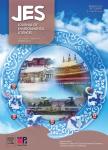GIS based ArcPRZM-3 model for bentazon leaching towards groundwater
GIS based ArcPRZM-3 model for bentazon leaching towards groundwater作者机构:College of Natural ResourcesUniversity of Wisconsin-Stevens Point Department of Civil EngineeringSchulich School of EngineeringUniversity of Calgary2500 University Drive NWCalgaryAlbertaT2N 1N4Canada Department of Crop and Soil SciencesThe Pennsylvania State UniversityUniversity ParkPA 16802USA
出 版 物:《Journal of Environmental Sciences》 (环境科学学报(英文版))
年 卷 期:2010年第22卷第12期
页 面:1854-1859页
核心收录:
学科分类:082803[工学-农业生物环境与能源工程] 08[工学] 0828[工学-农业工程]
基 金:supported by the United States Department of Agriculture Cooperative State Research Education and Extension Service(USDA-CSREES) grant through a subcontract from the University of Arkansas
主 题:ArcPRZM-3 PRZM-3 GIS pesticide leaching groundwater contamination bentazon
摘 要:Groundwater contamination due to pesticide applications on agricultural lands is of great environmental concern. The mathematical models help to understand the mechanism of pesticide leaching in soils towards groundwater. We developed a user-friendly model called ArcPRZM-3 by integrating widely used Pesticide Root Zone Model version 3 (PRZM-3) using Visual Basic and Geographic Information System (GIS) based Avenue programming. ArcPRZM-3 could be used to simulate pesticide leaching towards groundwater with user-friendly input interfaces coupled with databases of crops, soils and pesticides. The outputs from ArcPRZM-3 could be visualized in user-friendly formats of tables, charts and maps. In this study we evaluated ArcPRZM-3 model by simulating bentazon leaching in soil towards groundwater. ArcPRZM-3 was applied to 37 sites in Woodruff County, Arkansas, USA to observe the daily average dissolved bentazon concentration for soybean, sorghum and rice at a depth of 1.8 m for a period of two years. Nineteen ranks of bentazon leaching potential were obtained using ArcPRZM-3 for all sites having different soil and crop combinations. ArcPRZM-3 simulation results for bentazon were compatible with the field monitored data in term of relative ranking and trend, although some uncertainties exist. This study indicated that macropore flow mechanism would be important in analyzing the effect of irrigation on groundwater contamination due to pesticides. Overall, ArcPRZM-3 could be used to simulate pesticide leaching towards groundwater more efficiently and effectively as compared to PRZM-3.



